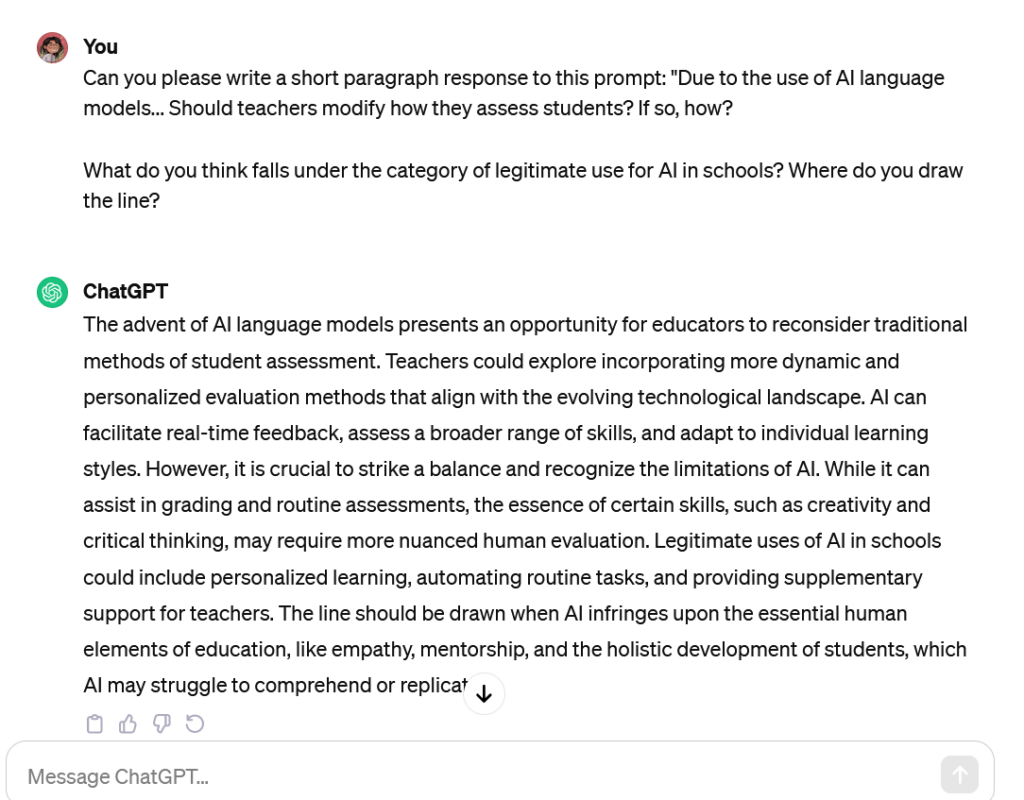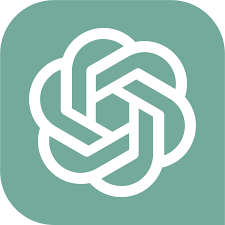This week in Ed Tech we discussed artificial intelligence, its rampant rise in society, and how this technology may impact our classrooms and our teaching. AI is a broad-sweeping term, and for the purposes of a blog post, it is too much for me to discuss every possible facet of it. So in this review, I am focusing on the artificial language model, ChatGPT which has been met with a lot of controversy in the last year.
I have a hesitant, but open-minded view of this technology. I am terrified of it’s potential negative implications on society if not used well (can you imagine a George Orwell 1984 society? Because if it is not used correctly, I can!). However, I also see this tool as a powerful source to motivate learners and encourage everyone to learn new things and access new skills.
For example, it reduces the barrier to entry for a lot of folks. In class we discussed computer programming. Normally this field has a very high barrier to entry; in order to begin to code you need to learn the fundamentals, which can take months to a year to master. You can’t just pull up a 20 minute youtube video and then create a program that functions. I took two first year level programming courses, and even then by the end of a year of study, I could only program rudimentary programs, even with support websites like Stack Overflow when I got stuck. It was frustrating, and there was low motivation to keep going, especially when the console told you that you had an error but could not tell you what or where! However, ChatGPT can write some entry level code for you, help you work through bugs and mistakes (without painfully combing through hundreds of lines of code one by one), and give you a list of resources that directly apply to the purpose or question you want to answer with programming. Some may say this is “cheating”, or point out that students aren’t really learning the coding skills. To that point, I would say that is true, however, if a student then realizes they really enjoy programming and wants to learn more of the fundamental skills to gain some independence, the student would be able to work backwards and do that, with far more motivation now that they have produced some working programs with assistance.
For the other two reflection questions outlined to use, I thought it would be interesting to see what ChatGPT thought of this itself… the result is including in a screenshot below.

I would say I agree with ChatGPT’s thoughts on this matter for the most part. Another things to consider around assessment are designing and implementing learning activities/assessments that force students to go beyond a “ChatGPT answer”. As the language model eluded to, teachers should be giving students work which requires them to use critical thinking and analysis, as well as creating/designing/developing things (whether this be literal as in solving a problem they identified, or something simple like creating a poster or model to explain their learning and present it in person). This is because this kind of work students cannot just have the computer do for them, they must put the thinking into it. They can use ChatGPT to generate ideas, find resources, or even do some of the writing for them (although I would consider that cheating in most cases) but the critical thinking portion or design portion would only be able to be done by them.
cover image sourced from the Wikipedia page on ChatGPT: https://en.wikipedia.org/wiki/ChatGPT

Leave a Reply
You must be logged in to post a comment.